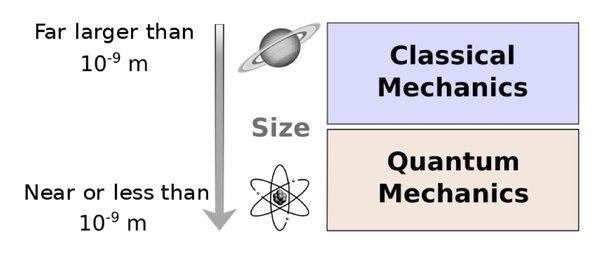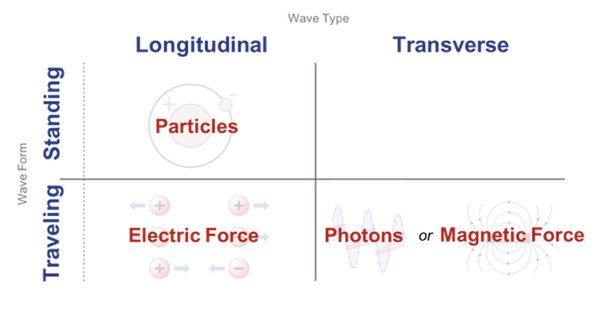Lesson
Introduction to Energy Wave Theory (EWT)
Welcome to the introductory lesson on Energy Wave Theory, often referred to as EWT. This course offers a fresh perspective on the fundamental laws governing our universe. Throughout these lessons, we will explore how EWT provides a unified framework to understand energy, waves, spacetime, forces, particles, atoms, and their orbitals, all based on the principles detailed on energywavetheory.com and the work of its authors and the pioneers of Wave Structure of Matter. If you have any questions, feel free to ask the AI Tutor. The details will be in future levels.
Why a New Perspective?
Modern physics, as it stands, is largely divided into two main branches:
- Classical Mechanics: Deals with the motion of macroscopic objects like planets, bicycles, etc. It uses laws like Newton's \(F = ma\), where \(F\) is force, \(m\) is mass, and \(a\) is acceleration.
- Quantum Mechanics: Focuses on the behavior of microscopic particles like electrons and photons, often described using Schrödinger's wavefunctions.

The challenge is that these realms use different, seemingly incompatible laws to describe the same universe. Additionally, we treat mass (related to gravity) and charge (related to electricity) as separate fundamental properties.
Occam's razor suggests that the simplest explanation is usually the best. A unified model would be preferable to two separate and sometimes conflicting rulebooks.
What is Energy Wave Theory?
Energy Wave Theory (EWT) is an alternative way of thinking about basic physics of the universe, including particle physics. In essence, EWT proposes that everything in the universe – particles, light, and forces – originates from waves propagating through a fundamental medium often referred to as the aether or spacetime.
According to EWT, all particles can be reduced to one fundamental oscillation: the neutrino, which is considered a tiny standing wave. Furthermore, all motion and forces are governed by a single principle: wave centers move in such a way as to minimize wave amplitude.
From these two core ideas, EWT attempts to explain atoms, forces, relativity, and quantum phenomena within a unified framework. This convergence is meant to reconcile the historical confusions between classical and quantum physics.
Energy as Waves
In EWT, energy is intrinsically tied to wave behavior. Consider wave energy in a medium with density \(\rho\), amplitude \(A\), wavelength \(\lambda\), and speed \(c\), where frequency (f) is wave speed divided by wavelength. The energy in a volume (V) scales proportionally as:
Standing waves, which are combinations of incoming and outgoing waves, store energy and manifest as particles. Conversely, traveling waves carry energy across space and are associated with photons and forces.
The "Aether" or Spacetime Medium
The concept of a medium through which waves propagate is central to EWT. While early experiments like the Michelson-Morley experiment failed to detect this medium (often referred to as the aether), modern simulations suggest that its presence can be masked by phenomena like length contraction and time dilation.
Spacetime, in this context, is envisioned as a vast ocean of tiny "granules" that facilitate the transmission of wave energy. Light, gravity, and even quantum jumps are viewed as wave phenomena occurring within this medium.
The motion of space is energy and there are multiple types and forms of waves, which we perceive to be different things:
- Particles are standing, longitudinal waves.
- Photons are traveling, transverse waves.
- Forces are different wave types causing the motion of particles to minimize wave amplitude.
- Atoms are formed by electrons and protons that have both attractive and repelling forces, causing the electron’s orbital.
Unifying Forces
EWT offers a fresh perspective on the fundamental forces of nature:
- Electric Force: Arises from longitudinal wave interference, specifically the interaction between nodes and antinodes of standing waves.
- Magnetic Force: Originates from transverse waves, which are related to particle spin.
- Strong Force: Is the short-range binding of quanta due to standing wave interactions.
- Gravity: Emerges as a subtle variation in longitudinal wave amplitude after spin energy is dissipated.

Simplified Laws of Energy Wave Theory
To recap, here are the core principles governing Energy Wave Theory:
- Huygens' Principle: Waves emanate as spherical wavelets, which then combine to form wavefronts.
- Momentum Transfer: Granules in spacetime transfer wave momentum in the direction of wave propagation.
- Wave Reflection: Wave centers reflect waves, leading to the formation of standing wave patterns, which we perceive as particles.
- Amplitude Minimization: Wave centers shift towards nodes, minimizing amplitude. This principle drives all motion.
- Energy Dependence: Energy within a given volume depends on the medium's density, wave amplitude, wavelength, and speed.
Core Equation
The most compact form of wave energy in a volume \(V\) is:
This equation can be manipulated to derive familiar laws such as Coulomb's law, Newton's law of gravitation, and Planck's equation (\(E = h\nu\)), by considering specific wave types and geometries. These details will be available in future levels and stages.
Preview of Future Topics
In subsequent lessons, you will delve into:
- How electrons orbit nuclei by balancing attractive (electric) and repulsive (wave spin) forces.
- The mechanism behind quantum jumps, involving resonance between longitudinal wave frequency and standing wave nodes.
- The origin of relativity (time dilation, length contraction) from Doppler-shifted longitudinal waves.
- The realization that fundamental constants (Planck's constant \(h\), Coulomb's constant \(k\), gravitational constant \(G\)) are fundamentally properties of the aether.

Summary
Ultimately, Energy Wave Theory proposes that everything in physics can be reduced to waves within a single, unified medium. This eliminates the need for separate "quantum" and "classical" worlds, providing a more cohesive understanding of the universe. Refer to the AI tutor to answer questions and further guide you on this subject.












